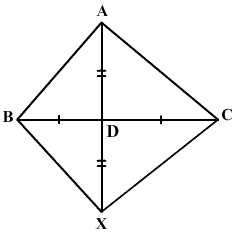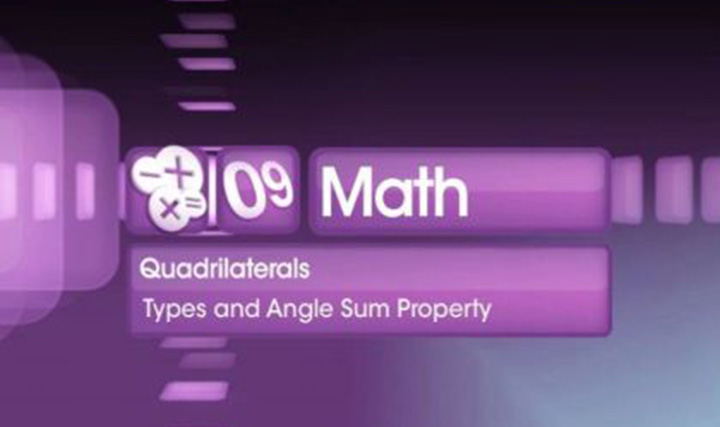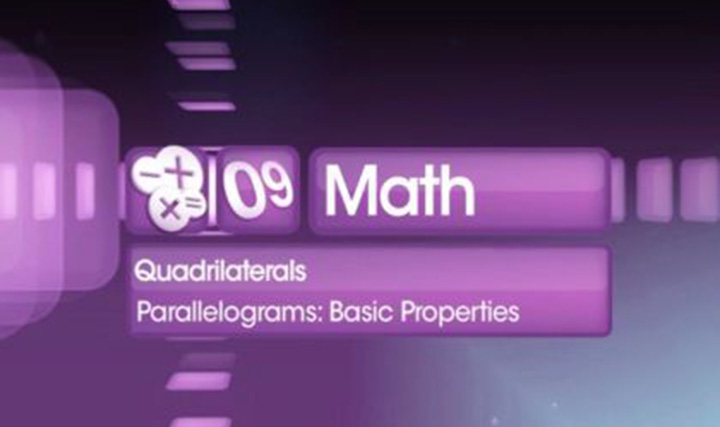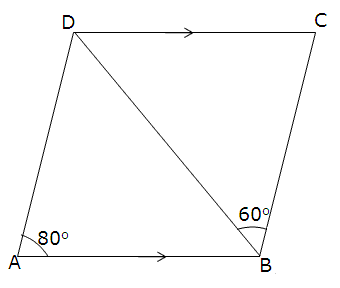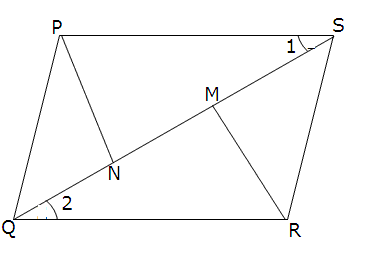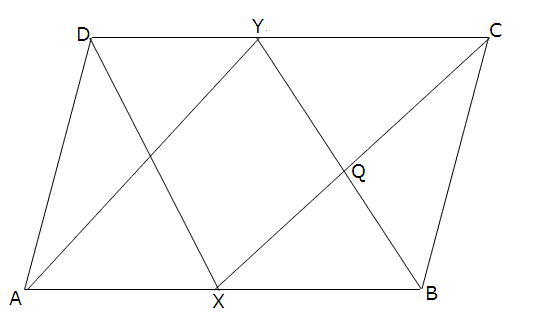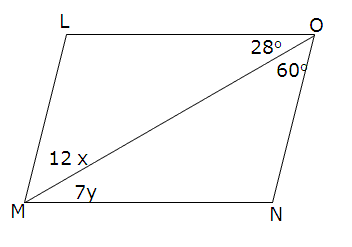CBSE Class 9 - Angle Relations in Parallelogram Videos
Angle Relations in Parallelogram
This video explains the relation between opposite angles in a parallelogram and explore the conditions that must be satisfied by a quadrilateral to be a parallelogram.
More videos from this chapter
View All- if the diagonals of a parallelogram are equal then show that it is a rectangle
- If an angle of a parallelogram is two thirds of its adjacent angle find the angle of a parallelogram .
-
In the figure ABCD is a parallelogram in which
 DAB = 80o and
DAB = 80o and  DBC = 60o. Calculate
DBC = 60o. Calculate  CDB and
CDB and  ADB.
ADB. - Find the measure of each angle of a parallelogram, if one of its angles is 30o less than twice the smallest angle.
-
In the given figure, PN and RM are perpendiculars to the diagonal QS of a parallelogram PQRS. Prove that
 PNS
PNS 
 RMQ and PN = RM.
RMQ and PN = RM. -
ABCD is a parallelogram in which X and Y are the mid points of AB and DC respectively. If AY and DX intersect in P while CX and BY intersect in Q, show that quadrilateral PXQY is a parallelogram.
-
LMNO is a parallelogram. Compute the values of x and y.
- Characterize the following statements a TRUE or FALSE and give reason for your answer. If a pair of adjacent sides of a parallelogram is equal, it must be a rhombus or a square.
- In a parallelogram ABCD, prove that the sum of any two consecutive angles is 180o.
-
In a
 ABC median AD is produced to X such that AD = DX. Prove that ABXC is a parallelogram.
ABC median AD is produced to X such that AD = DX. Prove that ABXC is a parallelogram.
